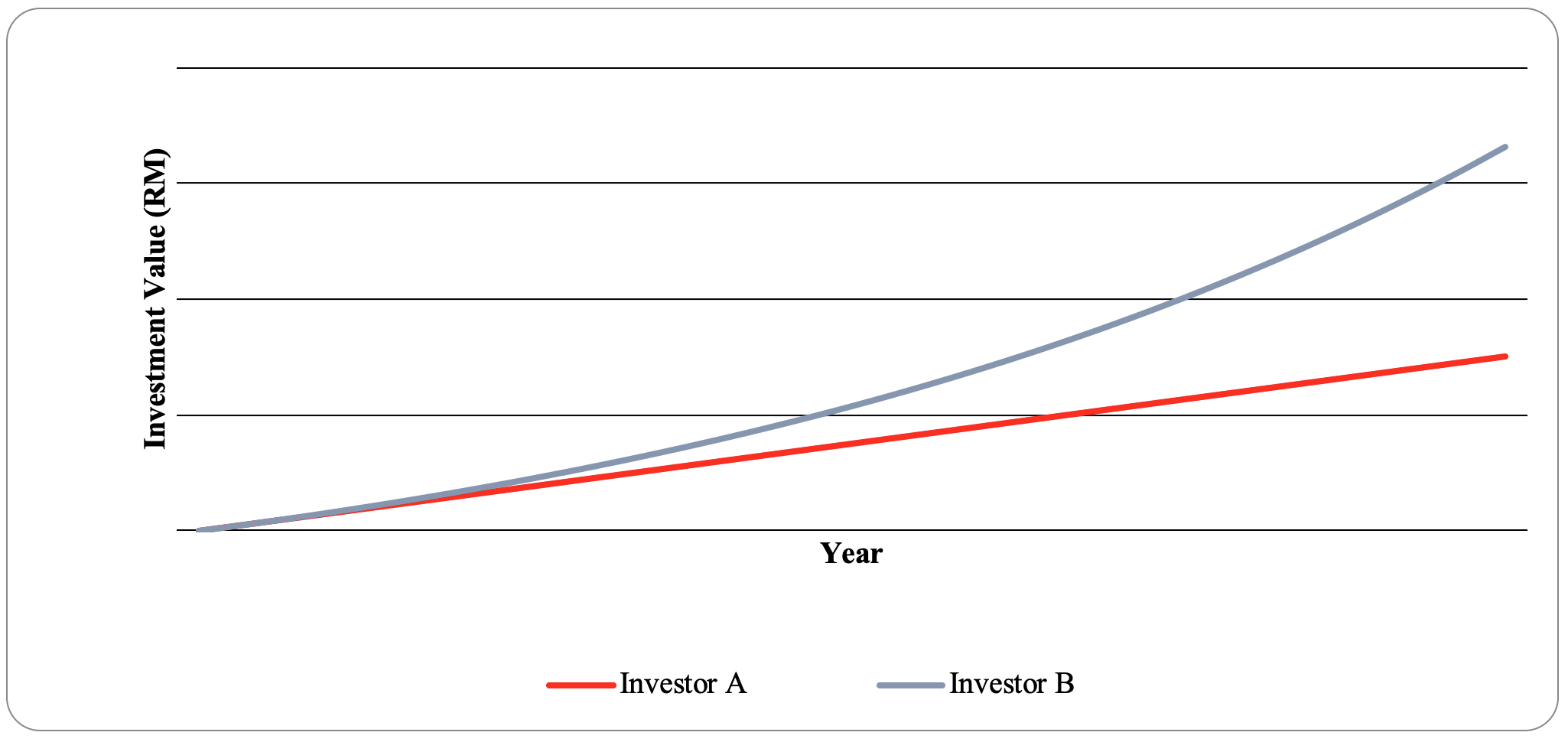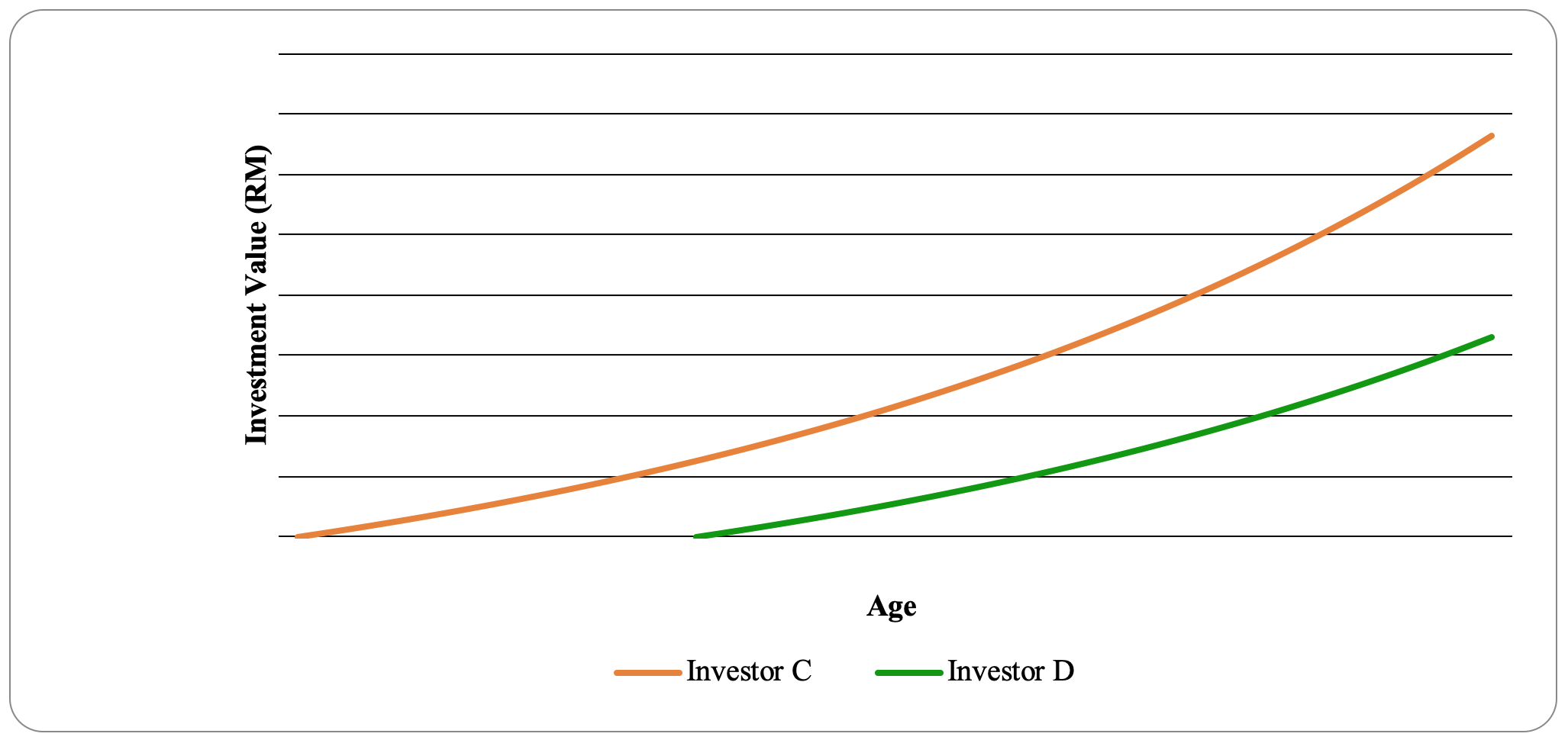The Power of Reinvestment
Reinvesting the returns of your fund can help your wealth grow exponentially over the long term. Investors need to understand the benefits of regularly reinvesting their funds’ returns as this simple strategy takes advantage of the power of compounding.
Power of Reinvestment
Reinvestment based on the principle of compounding is a powerful strategy because annual investment returns are reinvested back into the fund to generate additional future returns. Even savers who lock in their money in fixed deposits usually opt for monthly compound interest to benefit from the effect of compounding. For unit trust investors who automatically reinvest their distributions back into the fund, their investment can be expected to grow at the fund’s compounded rate of return over the years.
However, the compounding effect requires time. The longer the time period over which we reinvest our returns, the greater our rewards as we allow our investments to grow over time.
Table 1: Impact of Not Reinvesting vs. Reinvesting Returns
| Investor* | Accumulated Investment Value (RM) | ||||||
| 0 Year | 1st Year | 2nd Year | 1st Year | 1st Year | 1st Year | 1st Year | |
| A | Returns are not reinvested | 10,000 | 10,500 | 12,500 | 15,000 | 20,000 | 25,000 |
| B | Returns are fully reinvested | 10,000 | 10,500 | 12,763 | 16,289 | 26,533 | 43,219 |
| Investment Value of Investor B relative to Investor A (%) | 0 | 0 | +2.1 | +8.6 | +32.7 | +73.0 | |
*Assume each investor starts with an initial investment of RM 10,000 and 5% p.a. returns compounded annually.
Chart 1: Impact of Not Reinvesting vs. Reinvesting Returns
As we can see from Table 1, Investor A and Investor B both invest an initial sum of RM10,000 in the same fund which yields an annual return of 5%. Investor A does not reinvest his returns while Investor B fully reinvests his returns. At the end of the first year, both investors have accumulated the same amount of wealth of RM10,500. However, in the 5th year, Investor A’s investment amounts to RM12,500 whereas Investor B’s investment is 2.1% higher than Investor A’s at RM12,763. In the 10th year, Investor B’s investment rises to RM16,289, which is 8.6% more than Investor A. By the end of the 20th year, Investor B has accumulated a total investment value of RM26,533 which is 32.7% more than Investor A. At the end of the 30th year, Investor A’s total investment amounts to only RM25,000. However, by reinvesting his returns, Investor B’s total investment for the same investing period accumulated to RM43,219, which is 73% more than Investor A.
Hence, we can see that the value of our investments would be limited if we chose not to reinvest our returns. Besides, we can see that the disparity between the final wealth accumulated between investors A and B widens exponentially over time. The effects of reinvestment may seem modest at the early stages of our investment. However, as more returns are reinvested over the years, the power of reinvestment is magnified. Therefore, the longer our money compounds, our annual returns will grow exponentially because the rate of return is computed on a larger investment base each year.
This is the reason compounding is known as the long term investor’s best friend. And, long term investors can take full advantage of compounding by reinvesting their returns. To make the best use of the compounding effect of reinvestment, investors should start investing early.
The Key Is To Start Early
Time is the long term investor’s best friend. An early start on investing will make a significant difference in enabling us to reach our goals. The following is a simple illustration to differentiate the investment outcomes between two investors – one invested early and the other invested 10 years later.
Let us look at Investor C and Investor D, who are of the same age. Both of them invested an initial amount of investment of RM10,000 into the same fund that generates a return of 5% per annum. Investor C started investing early at the age of 25 whereas Investor D only commenced investing in the same fund 10 years later at 35 years of age. Both investors C and D fully reinvested their returns. As illustrated in Table 2, Investor C was able to achieve an investment value of RM43,219 at the end of the 30-year period while Investor D was left far behind with just RM26,533. By investing just 10 years earlier, Investor C was able to accumulate RM16,686 or 63% more than Investor D by the time both investors reached 55 years old.
The moral of the story? Start investing early. The sooner you start investing, the greater the rewards.
Table 2: Investing Early Makes A Big Difference
| Age | Investment Value (RM) | |
| Investor C | Investor D | |
| 25 | 10,500 | - |
| 35 | 16,289 | 10,500 |
| 45 | 26,533 | 16,289 |
| 55 | 43,219 | 26,533 |
Chart 2: Investing Early Makes A Big Difference
Conclusion
Reinvestment based on the power of compounding has been an effective strategy for many long-term investors. By making small investments early in life, our savings can grow dramatically over the years. Because, getting started with investing as early as possible can make a big difference in how much wealth is ultimately accumulated. Compounding is one of the best tools to embrace to attain our long term financial goals. By recognising how compounding works, we will be motivated to invest young and keep investing. Start investing today and let your money grow as long as you can.
This article is prepared solely for educational and awareness purposes and should not be construed as an offer or a solicitation of an offer to purchase or subscribe to products offered by Public Mutual. No representation or warranty is made by Public Mutual, nor is there acceptance of any responsibility or liability as to the accuracy, completeness or correctness of the information contained herein.